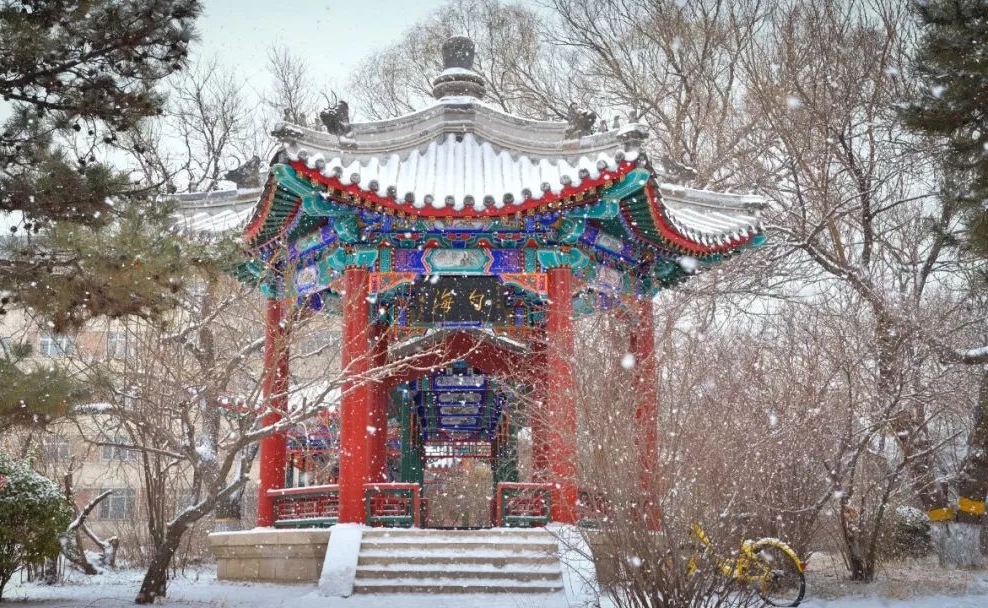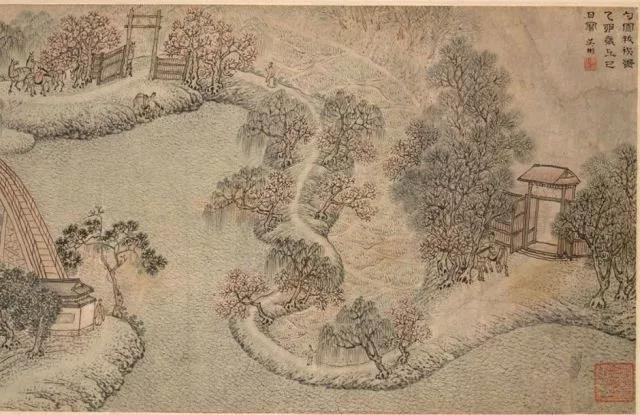Peking University, October 14, 2020: Shao Yuan is situated right south of the West Gate of Peking University. With eight buildings, two dining halls and an overall floorage of 38000 square meters, it is home to thousands of Chinese and international students and holds a number of high-level conferences each year. As a window for international exchanges at PKU, Shao Yuan is famous for its rich history and diversified cultures.

Shao Yuan, whose original name was Fengyanli, was initially constructed in the 17th Century by Mi Wanzhong, a renowned poet and artist in Ming Dynasty who had a particular taste for traditional Chinese gardens. “Shao Yuan” means “Spoon Garden” in Chinese. Mi intended to take advantage of just a spoon of water among the numerous ponds here to make a charming garden. With bridges and corridors stretching across the ponds, Shao Yuan boasted a beautiful water landscape that resembles typical water towns in Southeast China. Visitors can wander around the garden in a boat in a leisurely mood. A hall with a high ceiling named “Shao Hai” sat at the end of the curving bridges, in front of which lied rocks with strange shapes as well as a few pines. In summer, the ponds were crowded with water lily, hence pervaded with a delicate fragrance. On the east of the Hall sat a house that looked like a stone boat, whose name was “Taiyiye”. If you went further east, you would have seen a bunch of luxuriant bamboos which managed to survive the harsh winters in Beijing.

In Qing Dynasty, Shao Yuan was rebuilt and renamed as “Hongya Yuan” by Emperor Kangxi (1654-1722). When the British envoy Lord Macartney visited China, the diplomatic corps were accommodated in the royal garden since it was close to Yuanmingyuan Imperial Garden where Emperor Qianlong (1711-1799) dwelt. In 1860 when the Anglo-French Allied Force invaded Beijing, they burnt down the garden along with Yuanmingyuan as it was used to imprison British and French captives. It had become a wasteland until it was purchased by Yenching University, one of the predecessors of Peking University, in the early years of the Republic of China. Since then, Shao Yuan has become part of the campus of PKU.
In the 1980s, the pavilion, bridges and corridors were restored over the ponds. Pu Jie, the younger brother of the last emperor of China, wrote “Shao Hai” on the horizontal inscribed board of the north pavilion, while the calligraphy “Ying Yun” of Zhao Puchu, a famous modern Chinese calligrapher, is hung on the south one. Meanwhile, rows of building complex, including meeting rooms, hotels, western and Chinese canteens and dormitories for international guests and students, were completed on the former site of Shao Yuan. With a long history of international contacts and a large number of international students and professors living here, Shao Yuan is renowned as the “mini-UN” at Peking University. Shao Yuan is where different cultures and peoples meet and merge.
Nowadays, with a western restaurant, a Chinese restaurant and a student canteen, Shao Yuan is a paradise for gourmets, offering all sorts of delicacies that cater to the taste of PKUers. In addition, as an international conference center and hotel, it accommodates dozens of large conventions and banquets each year. For those who come a long way to Peking University, Shao Yuan will be their first stop, leaving a deep impression with its delicate foods and accommodations.
Walking along the curving corridors and bridges, we can have a glimpse of the elegance and grace of the former royal garden. Closely intertwined with international communication, Shao Yuan will continue to play a pivotal role for Peking University.
Written by: Yu Cong
Edited by: Zhang Jiang, Yan Shengnan
Photo credit to: Lv Chen, Shaoyuan Guest House, Peking University Media Center




